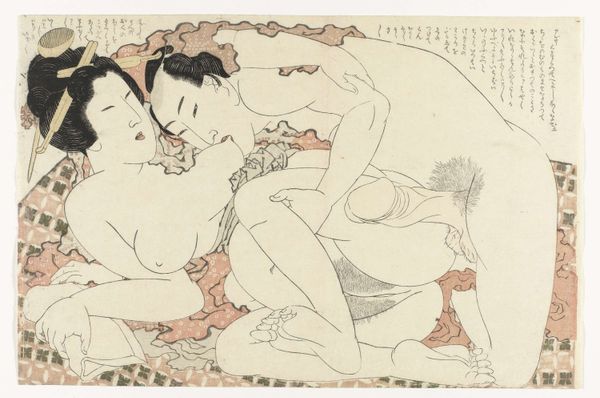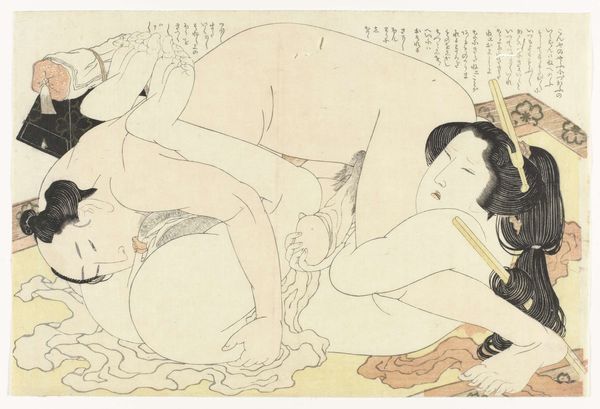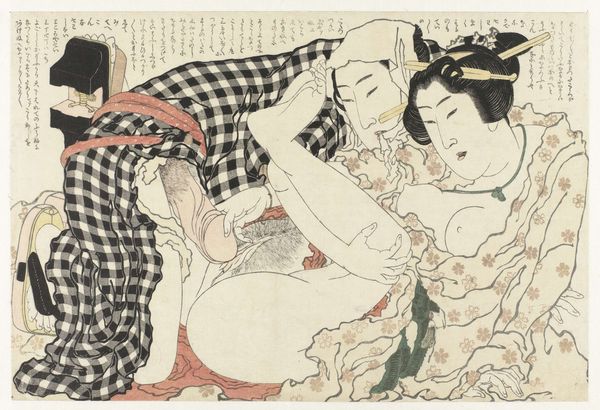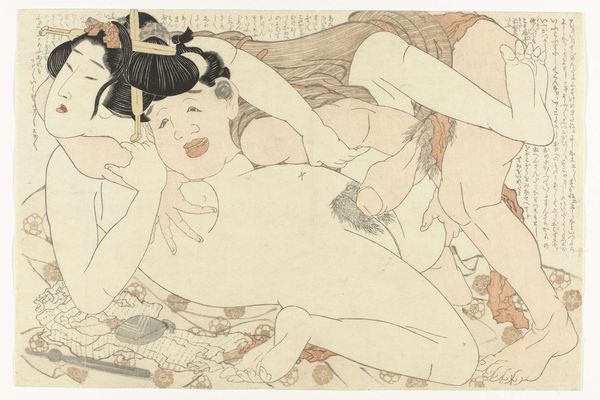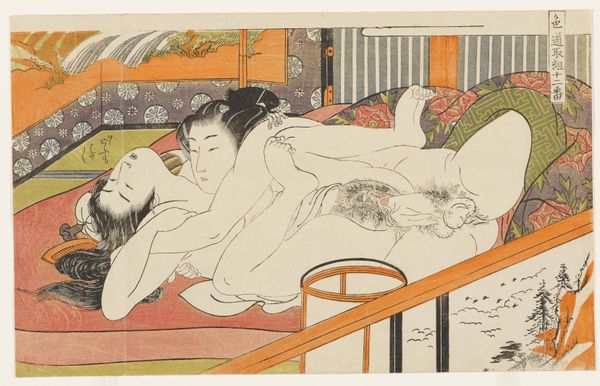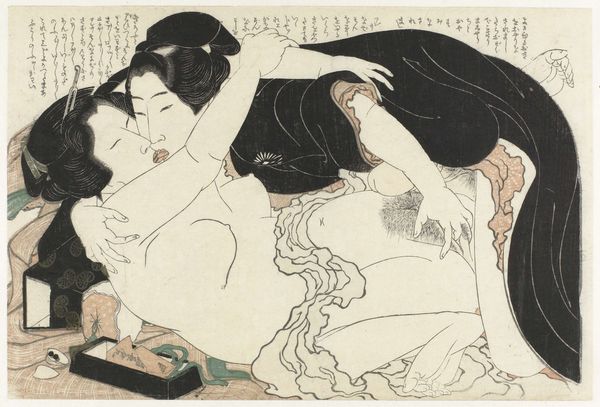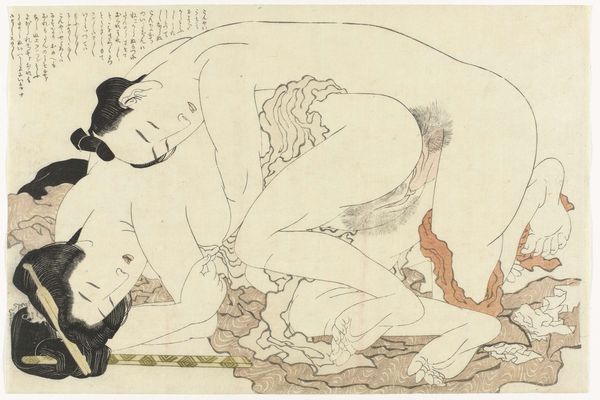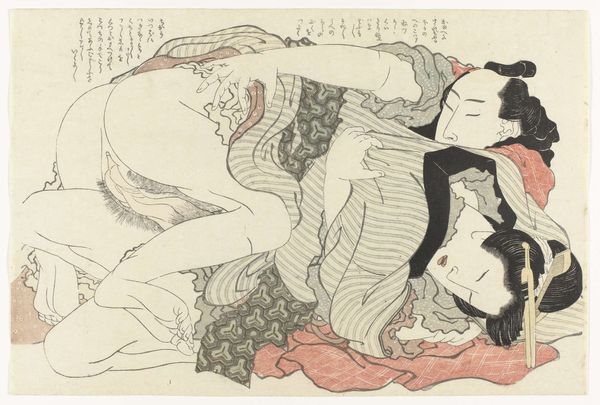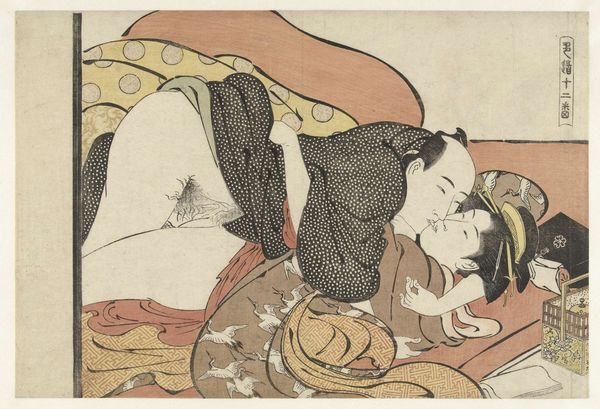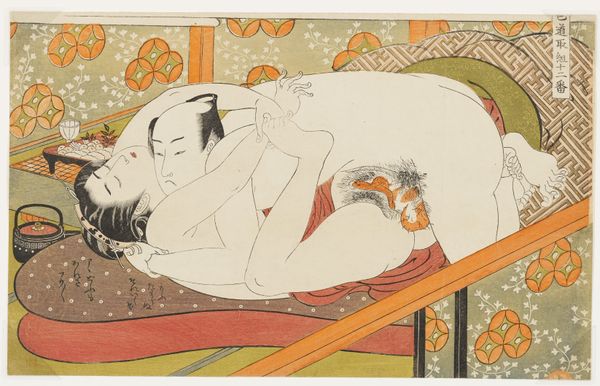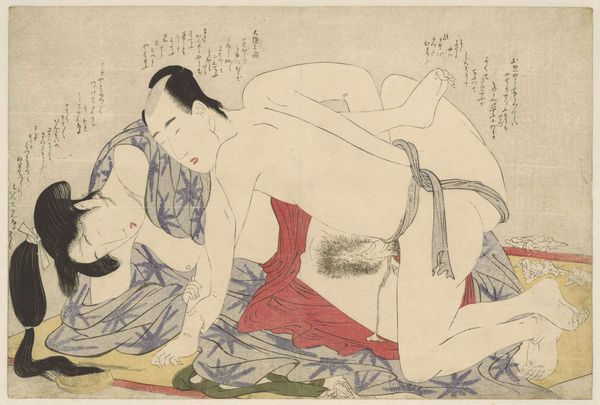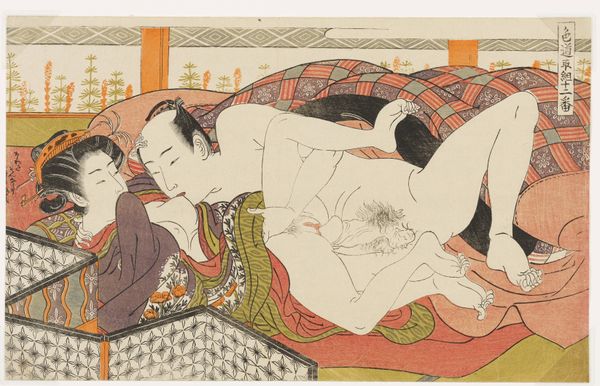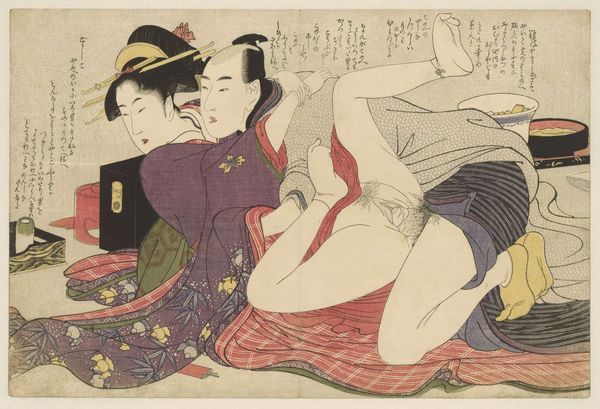
Dimensions: height 256 mm, width 385 mm
Copyright: Rijks Museum: Open Domain
Curator: Looking at this woodblock print from between 1815 and 1823, entitled "Lovers in a Mosquito Net" by Katsushika Hokusai, one is struck by its complex rendering of intimacy within defined boundaries. Editor: Intimacy, certainly. Though my initial impression is one of staged sensuality. The starkness of the lines and limited palette lend it an almost clinical feel, despite the subject matter. Curator: Ah, but consider the interplay between the detailed interior, suggested by the mosquito net, and the intertwined figures. Hokusai masterfully uses line to create depth and tension, drawing our eye to the central figures and their embrace. Semiotically, the mosquito net could be viewed as representing the confines of societal norms within which even erotic experiences are framed. Editor: I'm more drawn to the actual crafting. The lines themselves suggest a quickness of hand, a rapid carving into the woodblock. How much did the physical process of creation—the labor—impact the final design? This was, after all, a piece for a mass audience. And consider the paper used – the specific textures that create different qualities on the lines. Curator: Your point about the materials and mass production is well taken, though I still return to the forms themselves. The twisting, almost knot-like arrangement of bodies invites us to think about representation and reality, a central trope in much erotic art. Are we meant to view it literally or as an idealized construct of desire? Editor: The very means of reproducing such images would've circulated ideals and practices, forming and reshaping desires for its beholders. Think about it-- wood and paper. Natural substances converted into art through deliberate craft. This artwork existed because of its accessible mode of distribution, impacting popular culture directly. Curator: Perhaps both interpretations can hold true, in tension. We are invited to reflect on both form and the cultural context from which this imagery arose. The lines capture not only desire but a form of restraint or channelling, which the framing device reinforces. Editor: I agree, acknowledging the reciprocal influence here. Material means of creation shapes its aesthetic qualities and impact on societal interpretations and norms. We must appreciate Hokusai's skill both as an artist and, crucially, as an artisan.
Comments
No comments
Be the first to comment and join the conversation on the ultimate creative platform.
